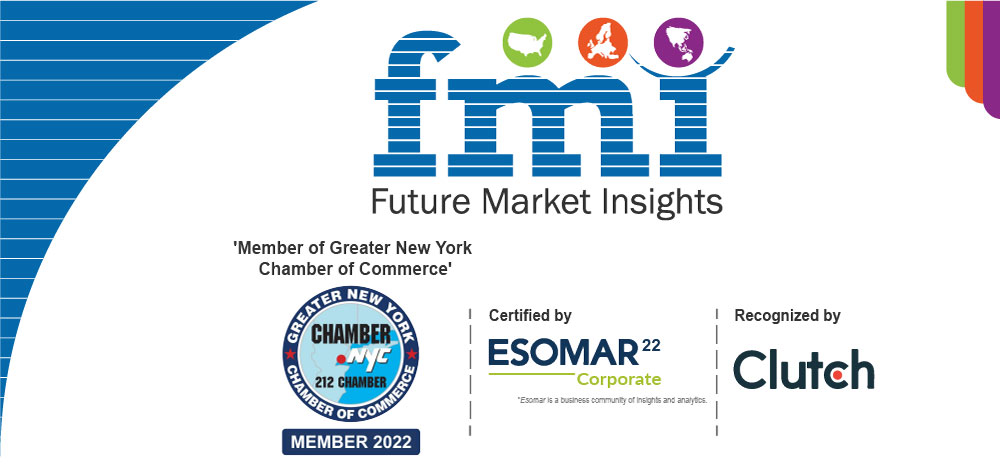The thermal insulation packaging market is expected to expand its roots at a steady CAGR of 13.5% during the forecast period. The market is likely to hold a revenue of US$ 77.4 billion in 2023 while it is anticipated to cross a value of US$ 274.8 billion by 2033.
Global supply chains have created the need for thermal insulation packaging. Distribution of food and beverages and pharmaceuticals has intensified the demand for reliable thermal insulation packaging solutions. High emphasis on the regulatory compliance of food and pharmaceutical products is also driving the need for thermal insulation packaging to ensure the integrity of the products.
According to FMI’s Analysis, Thermal Insulation Packaging Sales Witnesses an 8.8% CAGR between 2018 and 2022
Thermal insulation packaging is extremely useful for the biopharma industry to preserve the quality of the products. Thermal insulation packaging has been highly effective to reduce losses and ensuring optimum freshness for the food and beverage industry.
The market is projected to boost post the pandemic due to the increased demand for thermal insulation packaging solutions in the pharmaceutical industry. Prominently for medical products such as testing kits, vaccine distribution, and the development of drugs to treat infections. The development of drugs to treat patients raises the need for more reliable thermal insulation packaging systems. As temperature control determines the stability and quality of the drugs.
Healthy eating has spurred demand for global food products without nutritional decay. Consumption of high-end food across geographies increases the need for thermal insulation packaging to sustain the freshness of the food products. These factors present a positive growth outlook. FMI expects the global thermal insulation packaging market to witness a 13.5% CAGR through 2033.
Advanced Technology to Enhance Safety and Temperature Monitoring
Data loggers with temperature sensors and USB connection points are increasingly becoming common and cheap to incorporate. These label-like loggers easily affix to the packaging and continuously track temperature conditions and provide a full summary of time and temperature data. Furthermore, battery-powered data loggers can incorporate advanced technologies such as RFID, WiFi, and GPS, and can provide real-time information regarding temperature fluctuations.
How are Increasing Regulatory Requirements Driving the Thermal Insulation Packaging Market Growth?
Increasing demand for temperature-sensitive products has drawn regulatory attention. Regulatory bodies are stressing on ensuring that food and pharmaceutical products are complying with the norms. These have been kept within approved temperature ranges during transit. Growth in temperature-sensitive products has led to stricter regulations and high visibility across the supply chain. This makes temperature monitoring a must for pharmaceutical and food manufacturers.
Many manufacturers are leveraging this opportunity to build proactive strategies, which help them to identify excursions and send replacements to minimize delays. Furthermore, serialization requirements for biopharma products have intensified the demand for in-depth know-how of the temperature of products in transit.
Rental Business Boost Profitability for Thermal Insulation Packaging Manufacturers
A recent trend identified in the market is that thermal insulation packaging solution providers are rapidly expanding their rental business and are comparatively less focused on fresh sales of their products. Owing to the high costs of shippers and insulated containers coupled with environmental concerns associated with their disposal. Buying these remains an uneconomical and non-ecological solution for most end users. In Germany, disposal of PUR is not permitted, and one has to pay an additional fee for disposal of the same.
Various end users opt to lease or rent shippers/containers for thermal insulation packaging. On the other hand, shipper/container manufacturers achieve a reduced cost of ownership and increased return on their investment, thereby resulting in enhanced profit margins. However, unless a company has a closed-loop system, this solution remains uneconomical. Success in the business requires the establishment of depots at various geographical locations.
Va-Q-tec AG established a temperature-controlled container rental station in Singapore, in partnership with Yusen Logistics Pte. Ltd.
Pelican Biothermal had introduced pallet shippers rental program under the brand name Credo on Demand.
Thermal Insulation Packaging to be Effective
Food waste, though biodegradable has an impact on the environment. According to epsindustry.org, around one-third of the food produced for human consumption goes to waste. This means that one-third of the resources such as land, water, energy, and finances required to produce food dissipate.
To retain the peak condition of agricultural harvest, it is necessary to transport them as quickly as possible to a facility where they can be cooled and stored. Insulated containers and shippers can be effective in packaging and storing agricultural harvests without affecting the nutritional value of the produce. Further, the growing demand for e-commerce has propelled the demand for thermal insulation packaging. For e-commerce food delivery partners, temperature control of perishable goods such as fresh produce, dairy products, and meat helps in preventing monetary losses. Due to product quality degradation and enhances customer satisfaction.
What are the Risks Associated with Passive Packaging?
Some pharmaceutical products are extremely temperature sensitive, and any sort of temperature excursion can damage the products, leading to tremendous losses. Passive temperature-controlled packaging offers significant cost benefits over overactive packaging techniques. However, there are clear risks associated with transporting products such as dry ice, gel packs, and insulations. Owing to unexpected delays in shipment leading to an unpredicted change in temperature. These translate into higher risks for temperature excursions. As global shipments rise and pharmaceutical products explore new geographies and terrains, unexpected delays are becoming increasingly common.
Furthermore, the ability to lease active systems on per trip basis is also overcoming the only disadvantage associated with them. Using active shipments also reduces stockpiling or disposing of packaging materials, including coolants. Hence, active packaging solutions are increasingly preferred for large-volume shipments.
Rising shipping volumes per consignment coupled with decreasing costs associated with active packaging solutions might restrain demand for passive temperature-controlled packaging solutions. Similarly, the rise in refrigerated truck solution providers and dropped prices associated with the same are significantly impeding sales of insulated bins/containers for perishable food transports.
Country-wise Insights
As per the FMI’s analysis, the food industry is one of the largest manufacturing sectors in the US and accounts for a significant share of shipments. Continuous demand for processed food is less affected by economic swings since food is a necessity. The frozen food segment is anticipated to grow owing to ease of carrying, cooking, and consuming. Frozen food provides convenience that is catering to the shift. Thermal insulation packaging is expected to grow owing to the need for packaging for frozen food distribution across the region. Frozen food manufacturers are continuously investing in thermal insulation packaging to ensure their products’ quality.
Germany is Europe’s leading and the world’s fourth-leading market for pharmaceuticals. The country’s highly attractive clinical trial and R&D location creates demand for proper packaging and transportation of pharmaceuticals and biological products. According to OECD, Germany spends more per person on healthcare as compared to other European countries. The share of spending on healthcare has increased since 2000 and is likely to grow further owing to an aging population and a rise in chronic illnesses.
According to International Trade Administration (ITA), the German medical device market is ranked first in Commerce’s Medical Device Top Market Report and still provides lucrative growth opportunities. Further, Germany is Europe’s largest biotechnology market and in the year 2019, 686 dedicated biotechnology companies generated sales of $5.5 billion which translated into 10% growth compared to 2018. This is anticipated to generate demand for thermal insulation packaging to maintain and protect the quality of healthcare products.
Agriculture plays a vital role in India’s economy. Moreover, India is a leading producer of various agricultural products. The Indian cold chain is still at a nascent stage whereby there is a shift from an unorganized cold chain sector to an organized cold chain sector. Though perishable goods are produced in large quantities, they remain untapped regarding thermal insulation packaging due to high investment and lack of awareness of handling perishable produce. Fledging temperature control has led to a huge loss of food and other resources. As per a study conducted by the Central Institute of Post-harvest Engineering and Technology (CIPHET), the total harvest and post-harvest losses in India amount to US$ 14 billion.
Growth in organized food retail and processed food sector along with urbanization is anticipated to further boost the demand for thermal insulation packaging. The trend is shifting towards establishing cold storage facilities and providing end-to-end services to control temperature throughout the supply chain.
As per National Center for Cold Chain Development (NCCD), there is a gap of 3.2 Metric tons in cold storage capacity and more than 50,000 reefer vehicles in India.
Rapid globalization and the introduction of low-cost medicines are leading to the rapid growth of the global pharmaceutical industry in Oceania. Various government bodies across the globe are promoting the adoption of alternative generic medicines and bio-similar products, which are significantly cheaper yet require thermal insulation packaging/logistics.
This shift translates into airfreight transportation becoming increasingly uneconomical, with various pharmaceutical companies shifting towards ocean freight. Transportation through the ocean is significantly different from airfreight transportation and requires considerably different thermal insulation packaging solutions.
With more preference towards ocean freight, companies should introduce more economical and improved solutions based on extended duration and protection in extreme temperatures, such as the ones based on vacuum-insulated panels. The demand for phase change materials-based coolants for varied temperature ranges and duration requirements is also increasing. Thermal insulation packaging solution providers can leverage this opportunity by introducing new product ranges catering specifically to ocean freight compliance.
These insights are based on a report Thermal Insulation Packaging Market by Future Market Insights.












